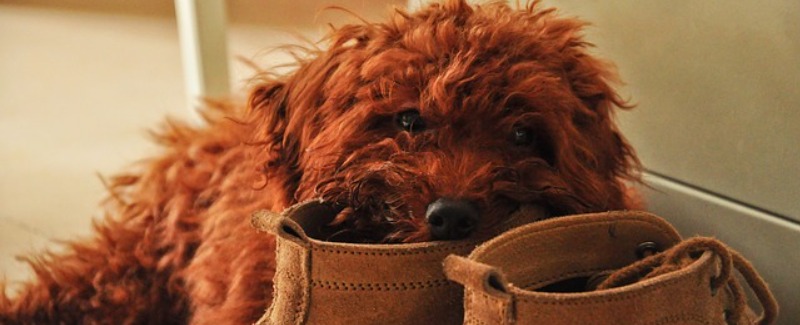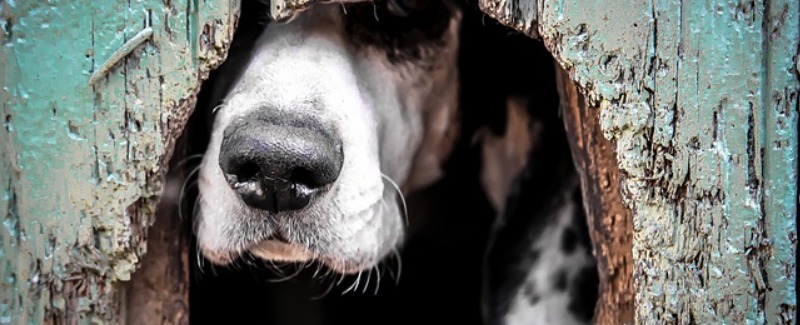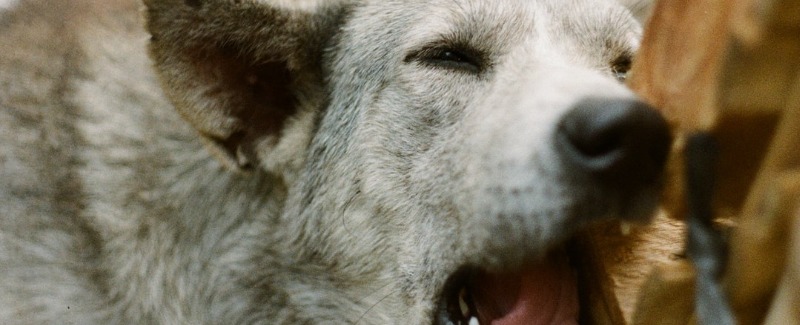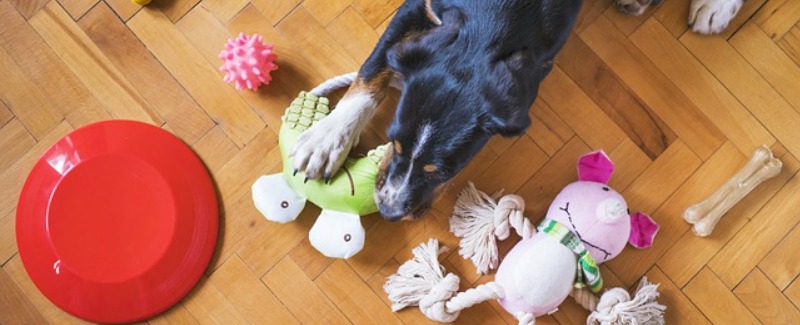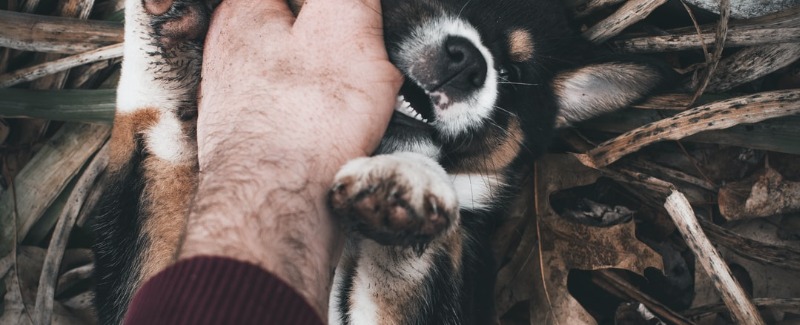Pica, or eating nonfood items like rocks, wood, drywall, socks, and coins, usually starts with chewing the items. A dangerous, even deadly habit, pica can cause damage to the mouth and teeth, illness from ingesting toxic substances, and intestinal blockage, just to name a few of the possible ill effects.
Why Do They Do That?
Dogs with pica issues engage in the behavior for several different reasons. It usually starts innocently enough, with the unsupervised dog picking up an inappropriate item out of boredom or normal puppy exploration. Because no one is around to interrupt and redirect him to something appropriate and safe, he settles in for a nice chew and maybe even eats part or all of the contraband. In other words, it seems to be a successful turn of events for the dog, who is now much more likely to repeat the same behavior in the future. Most dogs who chew or eat random or indiscriminate items are just plain bored, frustrated, stressed or under-exercised.
Some dogs with pica actually have an obsessive-compulsive disorder. With this type of dog, there is usually one particular item, like rocks, that they are compelled to chew. This is also the case with anxiety disorders, in which chewing rocks (or whatever the pica object is) seems to satisfy the same need that thumb sucking and nail biting do in people. We can’t allow dogs to self-medicate in this fashion due to the potential for illness, injury, or death.
Protect Your Dog From Himself
Well, it’s apparent that your dog isn’t going to take his own health and safety into consideration when deciding what to chew on, so you’re going to have to make the decision for him. Obviously, good management is imperative to prevent your dog from being successful in acquiring, chewing, or eating unsuitable stuff. Since so many dogs start the behavior just because they’re bored or have too much energy for their activity level, finding them a job or two and regularly exercising them to the point of tiredness is sometimes enough to fix the problem. Of course, providing appropriate and attractive chewing alternatives is important. Treat-dispensing toys, balls, or cubes are especially helpful in this regard.
At one time, it was theorized that dogs that eat rocks have a mineral deficiency or digestive disorder. Research has never been able to substantiate the theories, and pica and rock eating are now generally considered to be behavioral disorders.
For the truly obsessed, anti-anxiety medications can help, but these dogs usually require careful management so they can’t feed their obsession, literally or figuratively. Prevention is key, whether it means keeping the dog away from the inedible object, or the other way around. Basket muzzles, which allow dogs to pant and drink, may be required for the dog’s own safety in severe cases where the object of obsession can’t be removed from the environment, but should not be left on if the dog will be unsupervised. In some situations, particularly when the dog’s obsession could result in his death, aversion training using a remote collar is warranted.
The Poop on Poop Eating
Bleccchhh! As far as people are concerned, there isn’t much that dogs do that is more repulsive than poop eating. But to some dogs, there is no greater treasure on the planet than feces. Some dogs eat their own, or other dogs’, while others prefer the delicacies the kitty-litter box has to offer. Still others prefer the dung of wild animals, with deer, geese, rabbits, and turkeys being common favorites. And for the lucky dogs that live on farms, it’s a veritable smorgasbord!
It’s a bit of a mystery why dogs engage in this disgusting behavior. Some may have a dietary deficiency, but the most likely cause is the way dogs smell. No, not how they smell to you — their sense of smell. You probably already know, by observation of your own dog if nothing else, that dogs’ sense of smell if far more powerful than people’s. But power isn’t their only advantage. With people, the strongest scent tends to overpower everything else, so people only notice the strongest scent. Dogs’ sense of smell allows them to smell kind of in layers, so they smell all the scents that are there, not just the strongest. This means they don’t just smell the poop, but also they smell the undigested food that’s in the poop.
In rare cases, there is a physical reason for pica behavior. It is always a good idea to start any treatment of a severe behavior problem with a thorough veterinary examination. If nothing else, it will give you peace of mind.
Because this behavior is so self-reinforcing, management — supervising the dog and keeping the poop scooped — is necessary to control it. There are several products on the market for dogs that eat their own (or housemate’s) poop that are supposed to make the poop taste bad (sheesh!), but they are only marginally effective. Without prevention through good management, aversion training is the most effective treatment.

